Murals and Museums: Dark Tourism in Belfast
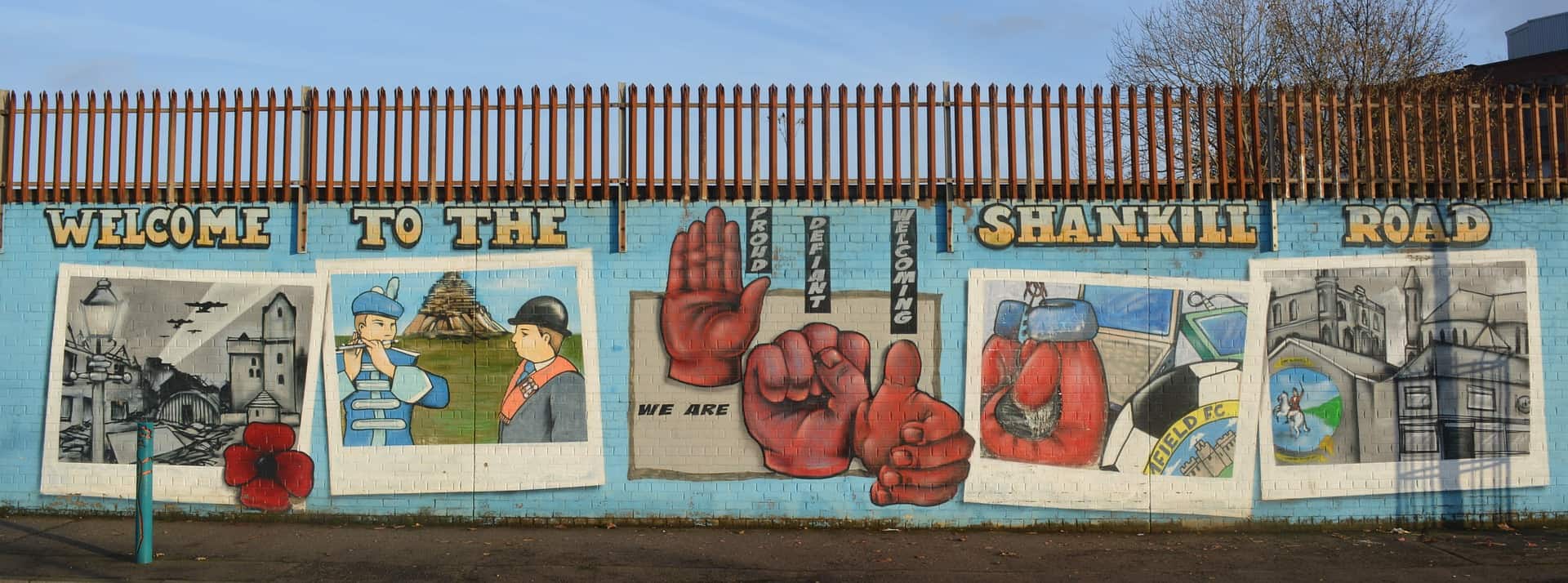
Updated On: April 15, 2024 by Ciaran Connolly
After a period of difficulty in Northern Ireland known as ‘The Troubles’, Belfast has been slowly reinventing itself as a tourist destination globally. Museums in Northern Ireland have been establishing themselves on the world stage as well. 2016 saw the Titanic Belfast Experience win the World’s Leading Tourism Attraction Award at the World Travel Awards.
There are plenty of things to do in Belfast, but the area of tourism that is getting the most attention is the darker side of Belfast history. For many years, Belfast was deemed a no-go area due to ongoing conflict. Now safe to visit, Belfast is attracting people fascinated with its violent and morbid history – this is the development of dark tourism within Northern Ireland.
With options like Crumlin Road Gaol and Belfast Troubles Tours becoming more and more popular, Belfast tourism is seeing an acceleration of visits. Voted Lonely Planet’s best place to visit in 2018, there’s never been a better opportunity to see it.
Dark Tourism: The World’s Morbid Fascination
The term ‘dark tourism’ refers to the desire of the general public to visit areas or scenes that have some form of a link to tragedy or, in some cases, atrocities. Historical sites that have had horrendous activities occur around them draw people from all over the world.
Places like Auschwitz-Birkenau, a Nazi concentration camp that saw millions tortured and murdered; Chernobyl which saw an unprecedented nuclear disaster; ‘Ground Zero’ in New York that was the site of the Twin Towers terrorist attack from September 11th are examples of spaces that have now become hotspots for tourism.
Despite this macabre notion, these spots are important parts of cultural history and have increasing value as a means of making sense of these awful events. A commercial interest is helping build the economies of those countries who are capitalizing on people’s desire to learn more.
Belfast is a city that is newer to these concepts but has successfully rolled out various tourist attractions to supply the demand. With the best places to visit in Belfast, from a tourist perspective, being fuelled by dark tourism, there has never been a better time to visit Belfast to learn more about its fascinating history.
Sinking Ships: The Titanic Belfast Experience
One of the most famous places in Belfast, the Titanic Museum, is considered the seminal museum to visit in the world regarding Titanic studies. While not a free museum, Titanic Belfast is a thorough retelling of the Titanic tragedy in a sympathetic and informative manner.
The self-guided option begins with the industrialization period, where Belfast is transformed into ‘Linenopolis’. The demand for linen sees the expansion of the shipyard, where ships were built to cope with the exponential growth for the exporting of linen.
The gallery then explains the shipbuilding process and a short ride reviews life on the shipyard. The next galleries explore the launch of the Titanic, her maiden voyage, and her sinking. The last galleries explore the aftermath: the transatlantic inquiries, Titanic as she is today, and a further gallery on ocean exploration today.
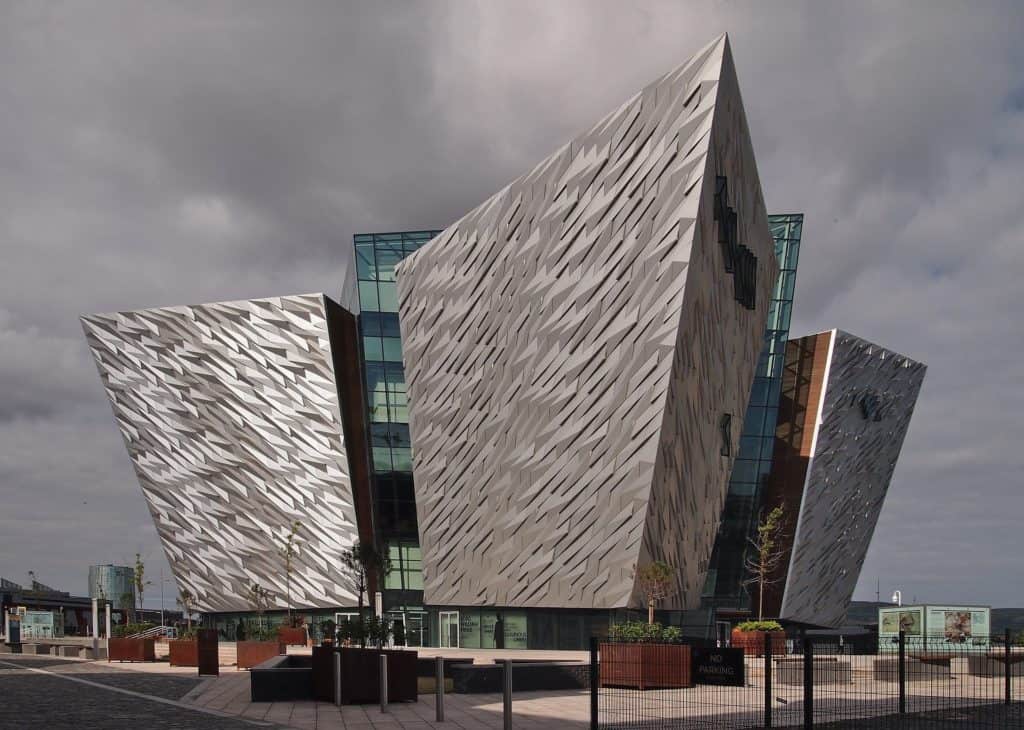
Titanic Belfast has benefitted from the global phenomenon that occurred in 1998 – the release of the Titanic film. Since then, people around the world have watched countless documentaries and now take part in pilgrimages to the site where the Titanic was built, ideally located right behind the museum. Titanic Belfast is a prime example of dark tourism in Belfast.
A tragedy that brought shame to a city is now driving crowds of people to the city. Last year, Titanic Belfast welcomed its 5 millionth visitor, and it is still a hugely popular stop. With options for guided and self-guided tours, Titanic Belfast is conveniently located, being only a 20-minute walk from the city center. A perfect example of successful dark tourism and iconic addition to museums in Northern Ireland.
Darker Times: The Belfast Troubles Tour
Belfast’s history is marred with blood and violence due to sectarianism that permeated communities, particularly in the 60s and 70s. This dark time is referred to as ‘The Troubles’ and is why many tourists ask if it is safe to visit Belfast. Following a turbulent few decades, the Good Friday Agreement was signed in 1998 to broker peace for those residing in Northern Ireland.
After 20 years of peace, Belfast is capitalizing on its past sores by giving tours of flash points throughout the city. These key interfaces have become a dark tourism pilgrimage for those who desire to know more about Northern Ireland’s bloody past.
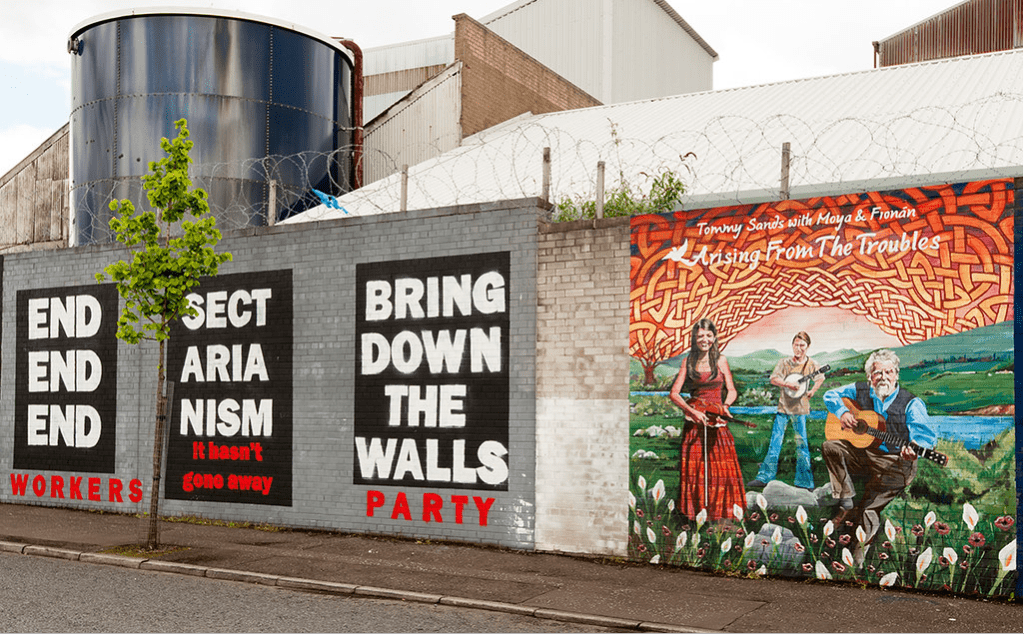
Belfast Troubles tours take you to areas that were contentious spaces during the conflict. The Peace Wall is Belfast’s greatest reminder of The Troubles. Situated between the republican Falls Road and the loyalist Shankill Road, the walls represent a time of instability and conflict in Northern Ireland.
Most of these tours are run by locals from both sides of the conflict – nationalist and unionist. They give a unique insight into the cultural norms of that time and the political attitudes of those living in Belfast and the surrounding areas.
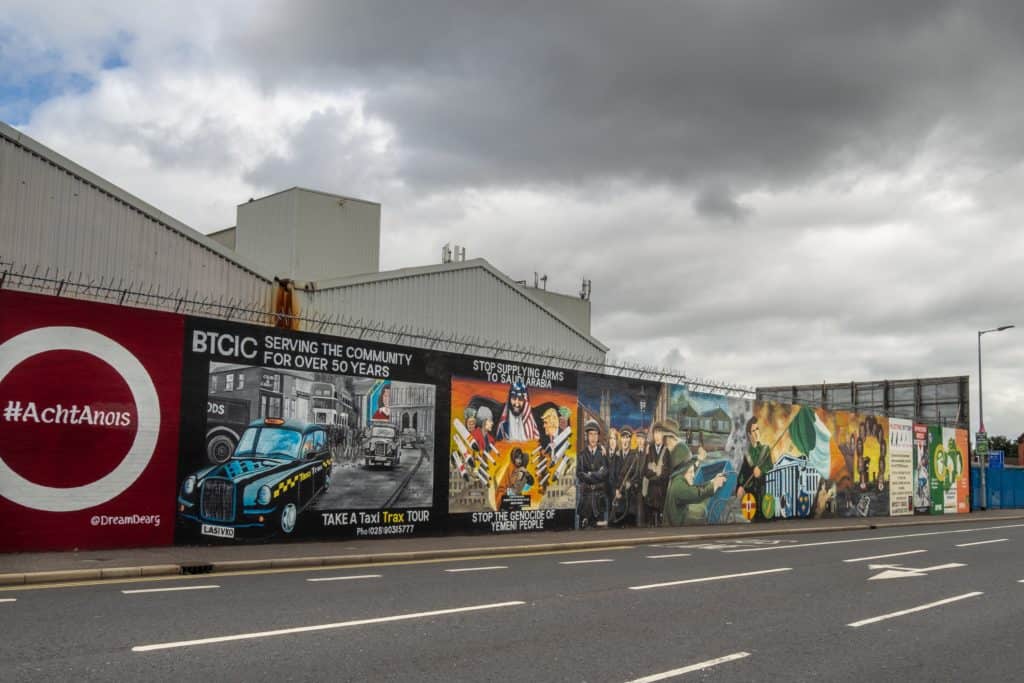
While the Peace Wall remains a major attraction, particularly due to the ability to contribute to public graffiti, other murals are incredibly popular with these taxi tours. Further down The Falls Road, murals commemorating members of the I.R.A are on display. Another favored area for tourist consumption is in East Belfast.
The East Belfast murals bear homage to the loyalism that is prevalent there. These areas also have their own museums highlighting their specific histories. The Eileen Hickey Museum is a museum of Irish Republican history, showcasing memorabilia of both sides of the conflict. Located on The Falls Road, it houses over 5000 artifacts.
East Belfast also has its own dedicated museum to its history. At the Andy Tyrie Interpretive Center, the Loyalist Conflict Museum was set up to educate about life for working-class, unionist communities at that time.
With multiple museums in Northern Ireland showcasing memorabilia from this time as well as providing opposing narratives from all perspectives, it’s hardly surprising that Belfast has become a pilgrimage for those interested in historical tragedy. The Belfast Troubles Tours are but another insight into the dark tourism of Northern Ireland.
Crumlin Road Gaol: Belfast’s Prison Museum
At the top of the Crumlin Road, Belfast’s prison museum sits perched opposite the notorious Crumlin Road Courthouse. A cold, narrow tunnel made of basalt rock connects the gaol and the courthouse. Both buildings were designed by the esteemed Charles Lanyon and have striking aesthetics.
Completed in 1845, it was referred to as the County Gaol for Antrim and was the first prison in Ireland to be designed on the ‘Separate System’ – an architectural and prison management system that centred around solitary confinement. This system lapsed during the internment of Republican prisoners in the early 70s, having as many as three prisoners per cell during the Troubles.
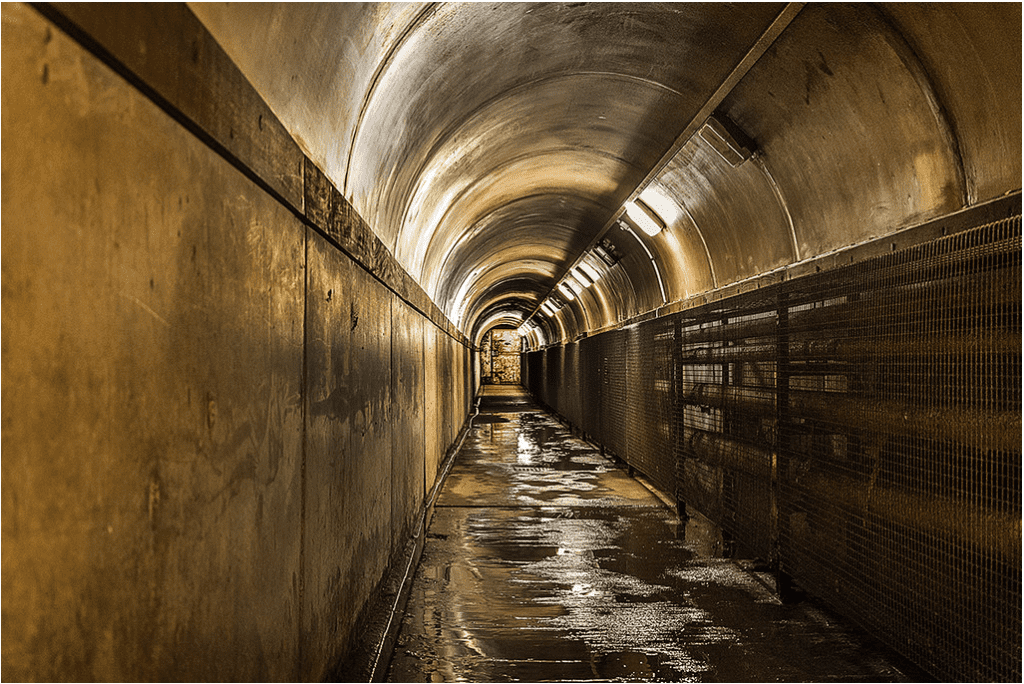
Serving as a prison for 150 years, the Crumlin Road Gaol replaced Carrickfergus Prison and saw inmates of all genders and ages. During the fight for female suffrage, suffragettes were imprisoned in the gaol, one of them being Dorothy Evans.
The prison was not constructed with a gallows, as most executions occurred in public view. An execution chamber was designed and built within the prison until 1961 when the last person was hanged in Ireland. Robert McGladdery, a convicted murderer, was hanged and remains the last person executed on the island of Ireland.
Over the years, the Crumlin Road Gaol has had a series of intriguing inmates. Later in the century, we see various political prisoners imprisoned for their involvement in the Troubles.
People of note who have had a stint in the Crum include Eamon de Valera, Bobby Sands and Martin McGuinness on the Republican side; as well as people such as Ian Paisley, Johnny Adair, and Michael Stone on the Loyalist side.
While it hasn’t operated as a prison since 1996, the Crumlin Road Gaol was restored and opened as a tourist attraction in 2012. Considered a premium museum in Northern Ireland, with traditional guided tours and ghost tours as well as being a popular venue, the Gaol has become an important stop for tourists. The terrifying history of the Gaol makes it a must-see for those wishing to experience dark tourism in Belfast.
Dark Tourism: Belfast’s Attractions
Without a doubt, some of the best attractions in Belfast are dark tourism hubs. However, despite the bloody past associated with Northern Ireland, Belfast tourism is thriving due to the demand for learning more about these tragic events.
With some of the museums in Northern Ireland ranking on the global scale, Belfast has become a significant stop for those who want to learn about conflict resolution through the Belfast Troubles tours or the incredible contributions made to engineering through the building of the Titanic. With plenty of things to do in Belfast, there has never been a better time to see it.






